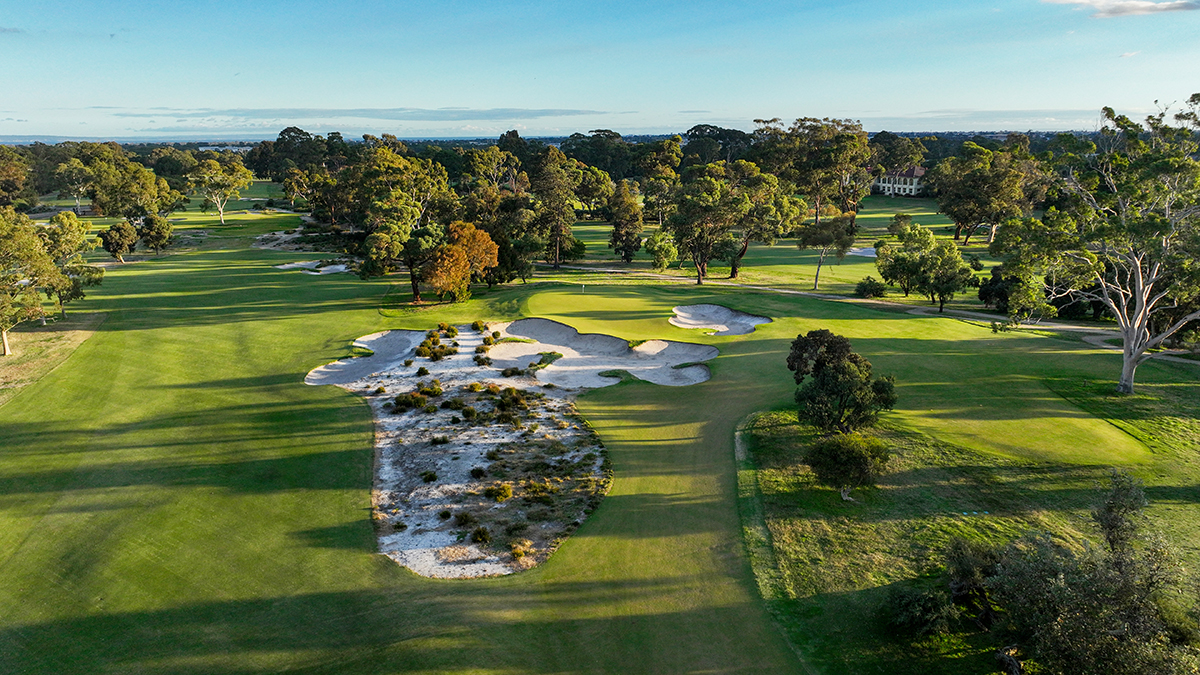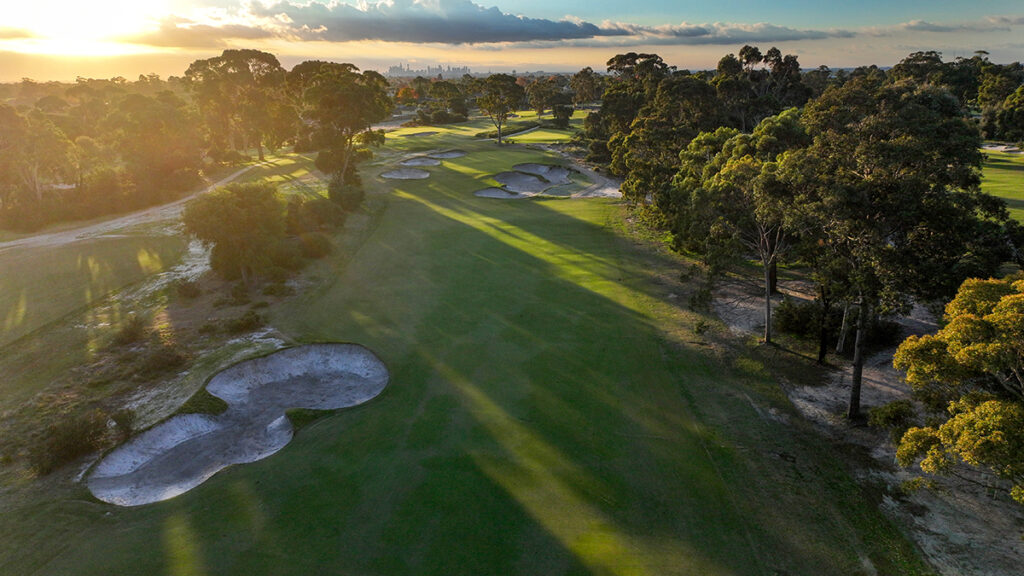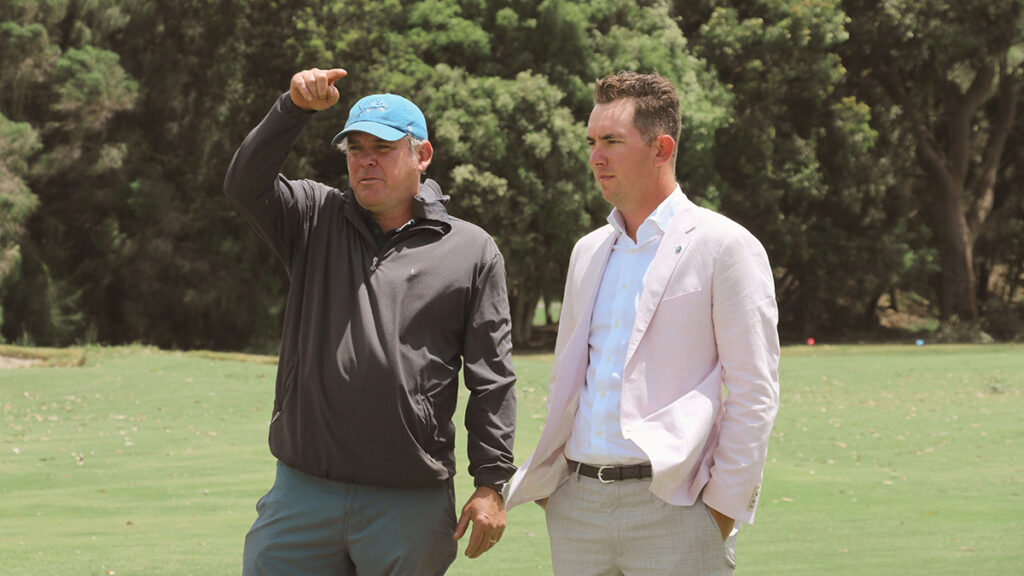Melbourne: A Sandbelt Renaissance – Australian Golf Digest

- by Admin
- September 25, 2024

The story behind the redesign of Yarra Yarra then Commonwealth by Renaissance Golf Design provides insights into the best way forward for the Melbourne Sandbelt.
Any decision to overhaul a golf course is not one to be taken lightly. Yet restoration and renovation have been trends across the Melbourne Sandbelt for some time now. Whether it’s subtle tweaks, almost imperceptible changes in vegetation management or full-scale overhauls, the elite courses in this prized corner of Australia’s most golf-rich city are constantly evolving.
Two of the Sandbelt brethren to recently savour the input of Tom Doak and Renaissance Golf Design firm are Yarra Yarra and Commonwealth golf clubs – the former now re-open for the past four years and the latter’s unveiling taking place this past March. Both clubs had similar reasons for undertaking major works, while there was also synergy in their aim: to renovate with each course’s history in mind but also for a sensible and sustainable future.
Yarra Yarra: Restoring Alex Russell’s vision
Would you believe a humble Post-it note was part of the catalyst behind Yarra Yarra Golf Club linking with Renaissance and the club committing to letting him renovate their course? The story goes that Doak, ever the rugged individualist, first played the course in 1988 and during that visit drew a sketch of the eighth green on a Post-it note. He loved that green, kept the sketch and brought it to his first meeting with the club 30 years later.
The breadth of Doak’s ‘homework’ was, of course, far more comprehensive. The club was seeking to return the Bentleigh course to something more reminiscent of Alex Russell’s original masterpiece. Doak and design partner Brian Slawnik’s deep knowledge of Russell’s work, paired with an ability to meld expertise with passion, resonated with Yarra Yarra.
Why embark on a major revamp of a course perennially ranked in the top 50 or so in the country? In short, the quality of the offering was declining. The club says it was “losing members and losing prestige”. A series of well-intentioned changes that sought to address singular problems had left Yarra Yarra with a disconnected course slowly deviating from Russell’s layout. A steady regression was reflected in Australian Golf Digest’s biennial ranking of our Top 100 Golf Courses. In 1998, Yarra Yarra ranked 13th in the country; by 2018, it had drifted to 51st.
Slawnik, who led the redesign, called it a loss of some of the cohesion of the original design. “It was the usual things,” he says today. “Well-meaning but overly ardent tree planting, the natural evolution of bunkers and green surfaces over the course of decades of play and cultural practice, and some past architectural changes to a few holes that may have answered a singular question or problem at the time of the works but resulted in other problems.
“Yarra Yarra was all about opening up and revealing the scale of the property, views across the site and highlighting mature stands of trees, vegetation or specimen trees among interconnected golf holes.”
Slawnik took the reins while Doak oversaw the greens – Yarra Yarra’s hallmark and main defence. Renaissance’s plan was to restore the greens back in their original positions and recreate Russell’s genius putting surfaces, tuning a few sour notes along the way.
There was also an element of ‘keeping up with the Joneses’. Many other Sandbelt courses had carried out or were also conducting major works. The renovation wave began with Peninsula Kingswood, Victoria followed soon after, while Huntingdale is in the middle of its overhaul. Metropolitan is gradually working through a similar project, while Commonwealth followed shortly after Yarra Yarra.
The geography of the Yarra Yarra course allowed the club to seal off the first seven holes and concentrate on the northern part of the property. Slawnik supervised the tree-removal program that allowed those holes to breathe and link the opening holes more cohesively. This part of the course was also rerouted to make the old sixth hole the new first, which also created a more logical beginning to the round by avoiding having a long par 3 as the first hole (it’s now the third).
Slawnik says their standard approach is to begin major redesign projects with the easiest part first. “Our drawings stipulate they are ‘conceptual only’ for a reason,” he says. “There is always discovery as we declutter an over-treed course revealing folds and features, views and connections. That is why we tackled the ‘easier’ sides of each of the projects first so we knew how to handle the surprises to come in phase two.”
Yet Renaissance and the contractors employed to undertake the work were deliberate in that first stage, which spanned December 2017 to March 2018. However, that approach spawned two fortunate outcomes within the membership: first, members became used to seeing part of the golf course under construction, and second, they liked what they saw of the first phase. Consequently, Yarra Yarra’s greens committee decided to dive into the second stage more rapidly than first outlined, shutting the majority of the south side of the course in September 2019 and unveiling the second stage
that December.
The finished product is a golf course that flows far better, with greens that are even more of a highlight than they were. It’s also far more open, without feeling like a vast, empty space. Kept intact were the nests of bunkers that defend greens like the second and 18th. The trees that remain catch your eyes far more, rather than melding into one another in an arboreal train. Fewer trees also means better airflow, reduced shading issues and less debris after storms. The short-cut couchgrass areas flow beautifully too, expanding in the redesign from 11 total hectares to 20.

If there’s a hole that raised a few eyebrows upon re-opening, it’s the 10th. Short at 306 metres and meandering slightly downhill, the pulpit-style green with 360-degree runoffs is Sandbelt lore at its finest. Only the most perfectly struck pitch shot will stay aboard the green, however there’s ample opportunity to play a running shot instead. The membership took time to figure out how to approach the new target, and while it did generate some spirited initial feedback, that has lessened over time.
Today, about 90 percent of the work is complete. Assessing the remaining vegetation is the next step in taking Yarra Yarra to the next level, while Slawnik is keen to renovate the short-game practice area.
“The most satisfying feedback I have heard from Yarra Yarra is how many people said they hadn’t realised what a great piece of property their club was built on,” Slawnik says. “It was known for some inspired par-3 holes and a wicked clubhouse. I think we revealed an outstanding property, and the clever routing and full collection of interesting golf holes created by Mr Russell.”
Commonwealth: A return to glory
The renovation of Commonwealth Golf Club is far more recent, yet it began from similar origins – and involved the same architects. Like its neighbour, Commonwealth was feeling the effects of time and had long held intentions of a major upgrade. What the club was waiting on, however, was in injection of funds from the adjoining Clarinda land. An eventual financial settlement of more than $5 million started the ball rolling.
In terms of which architects to turn to, Renaissance had stood out for the club for some time.
“Tom Doak was involved in the early stages of the discussions and also with the development of the concept plan,” says general manager Peter Paccagnan. “It was through that selection process and understanding what Renaissance’s intent was for the course, but then also their deep appreciation for Commonwealth. Tom has always regarded Commonwealth highly and featured it in his Confidential Guide To Golf Courses. So those two things combined – having quality architects and that they really appreciated what Commonwealth is, and that they were planning changes the membership would’ve accepted – that was really appealing to the committee at the time.”
Unlike, Yarra Yarra – which is the only golf course in the City of Glen Eira – Commonwealth faced stricter guidelines and lengthier approval processes when it came to tree removal. Despite sitting just a few hundred metres apart at their closest points, the two courses fall under different local councils, with Commonwealth part of the City of Kingston, which has quite aggressive targets in terms of overall canopy cover (seeking to grow to 20-percent coverage). Now evident are several ‘statement’ or ‘feature’ trees, often in the form of a single spotted gum behind a green that adds to the visual.
“At Commonwealth, we had to address decluttering, in terms of overplanting of trees and vegetation,” Slawnik says. “That effort was more about regaining space for golf and healthy turf while retaining the intimacy that particular routing of holes created and utilising the best existing trees and vegetation to protect that sense of place. Both projects were inspired by interconnectedness and dissolving the parallel. Yarra Yarra at scale, Commonwealth in detail.”

Given the scope of what lay ahead, the club recognised it was not a project that could be undertaken in one season, so instead opted to use the spring and summer periods of 2022-2023 and 2023-2024 for the two phases. A grass conversion acted as a precursor to the Commonwealth redesign. The tees were re-turfed with Santa Ana couch, with the same strain line-planted across the Legend couch fairways to establish a superior year-round surface and better keep Poa annua at bay. Meanwhile, the success of Pure Distinction bentgrass at Peninsula Kingswood and Victoria led Commonwealth to follow suit.
The first phase of work centred on the northern end of the course – to knock off the low-hanging fruit, as Slawnik put it. Minor changes took place with the greens at that end, but the focus was on vegetation and opening the playing lines, particularly giving golfers more options off the tee. The southern end would see the most substantial changes, with a series of intertwined ‘pieces’ shuffled. The maintenance facility was moved from between the 10th and 12th fairways to inside a neighbouring factory, which created space to expand the 12th, bring the tee back on the 11th and push the 10th green back further. That allowed the 10th tee to move to a position where there’s less chance of stray balls affecting the adjoining properties.
“We focused on preservation primarily, but also on study for part of phase two, which re-imagined – and to an extent restored – the relationship between the seventh and 12th greens, with the 10th green invited to the party as well,” Slawnik says. “I hope we achieved a level of connectedness and intimacy on the south end as inspired by the north.”
Commonwealth’s iconic first hole – a driveable, short par 4 in full view of the stately clubhouse – was one of four greens changed during the 1990s (along with the seventh, 10th and 12th). After careful consideration and speaking with the members, Slawnik returned the hole closer to its pre-’90s guise when there was more emphasis placed on position. The seventh enjoyed a similar reprisal, although the 10th and 12th allowed Slawnik to put his stamp on the greens while retaining the famous Commonwealth ‘tilt’.
Because the finished product was only unveiled in March, Commonwealth has had less time for appraisal compared to Yarra Yarra. The club (quite rightly) opted to sit out Australian Golf Digest’s most recent Top 100 Courses ranking, the evaluation period for which ended just before the re-opening. These past seven months have largely been an opportunity for members and their guests to become reacquainted with the layout.
Slawnik has plans to return later this year to inspect how the course has bedded down. With time to settle, Commonwealth will once again hit its impressive peak. The club has a busy summer ahead, hosting the first round of the Sandbelt Invitational in December (Yarra Yarra will host the second round) then co-hosting the Australian Amateur Championship in January. The two events will provide the first genuine tests of the new-look layout by elite golfers.

Proof is in the pudding
Slawnik impressed the two clubs and both sets of members from pitch to project completion. Yarra Yarra ticked all its restoration boxes and early indications are that Commonwealth has done the same.
“The work at Commonwealth is more recent and so I can’t fully comment on the feedback, but I can lay out an intent I think we achieved,” Slawnik says. “On both projects, there are a lot of new, relocated, restored or expanded features on both courses. If in a year or two you can’t tell that we were ever there, then I’ll be most proud of that.”
The Latest News
-
November 15, 2024‘A Heavy Crown’: Australian media’s obsession with Virat Kohli remains unmatched | Cricket News – Times of India
-
November 15, 2024Red Dawn: Australian Football League’s Gold Coast Suns Launch ‘Fearless’ New Brand, Logo
-
November 15, 2024Kyrgios confirmed to return to ATP Tour at Brisbane International 2025
-
November 15, 2024Australian bounce India’s arch-enemy amid KL Rahul dilemma
-
November 15, 2024Nick Kyrgios set to make long-awaited return to tennis as comeback date revealed





